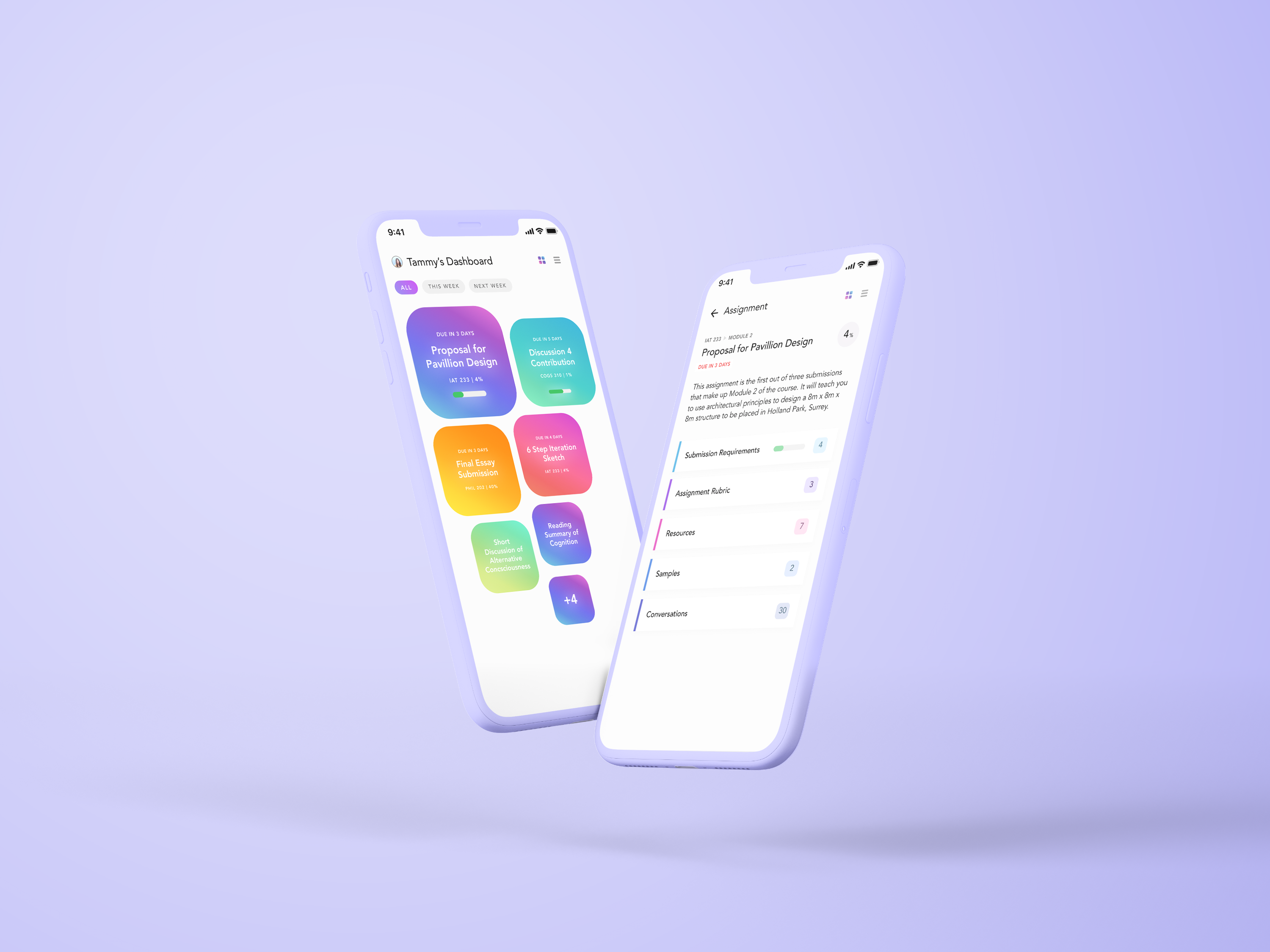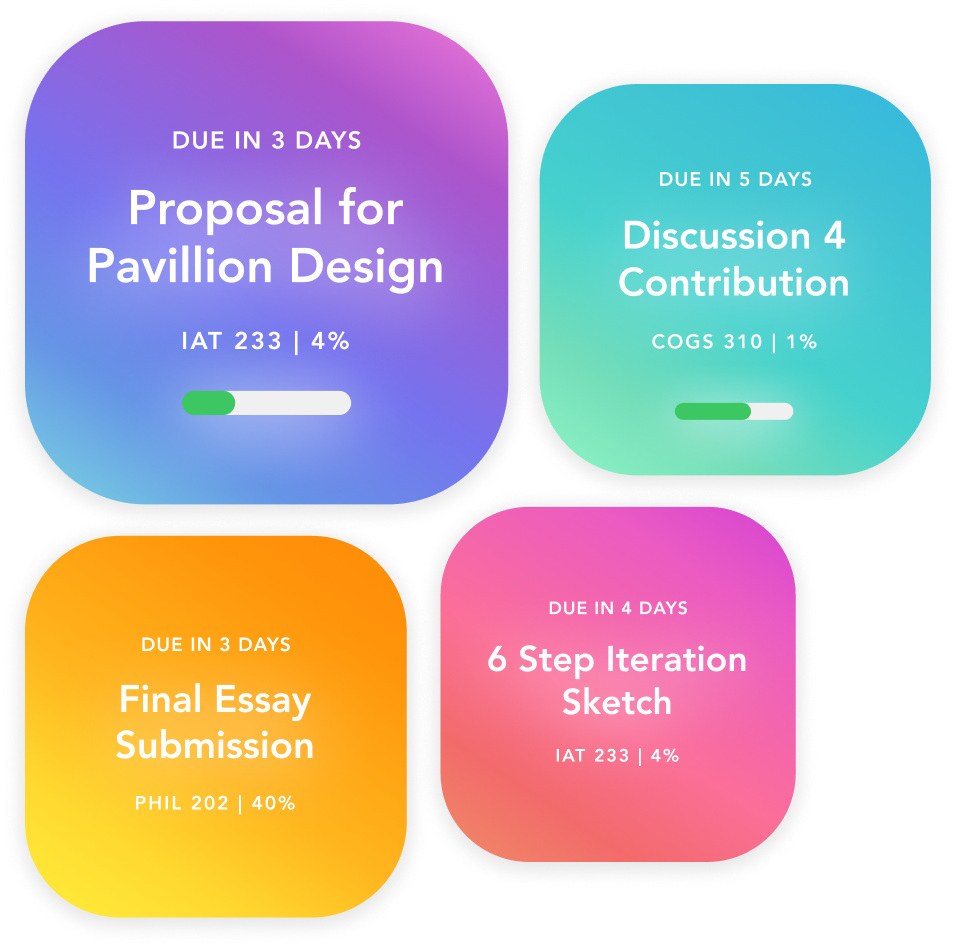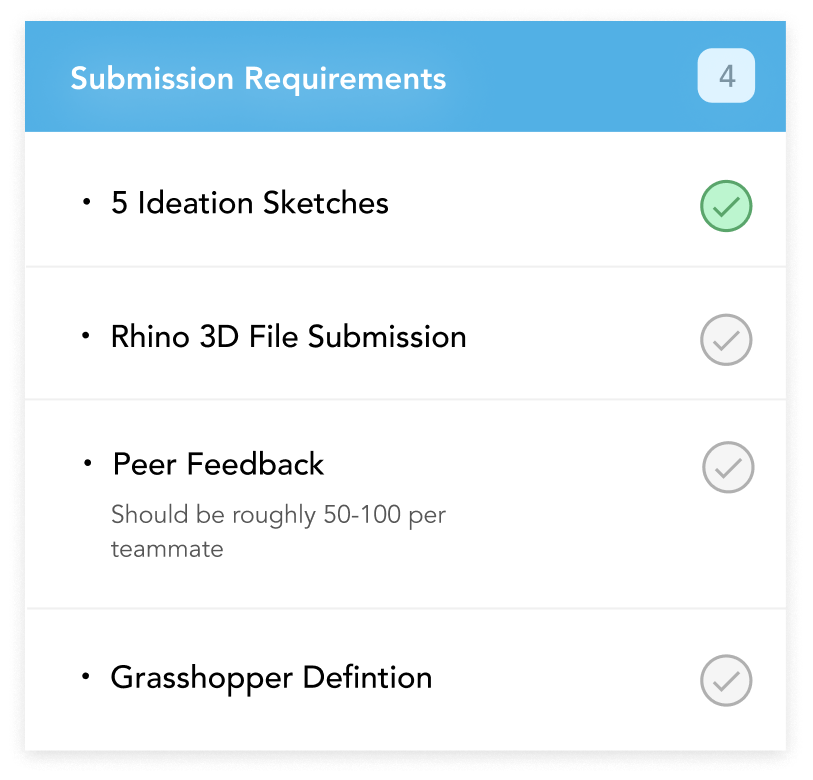Integrate with existing platforms
Through the API (application programming interface) from current educational
management
platforms such as Canvas or Blackboard,
Done can grab typical sets of data such as assignment information, submission rubric
and
assignment
discussions and display this information through the Done app. However, instructors
can
also choose to
deploy assignments through the Done system itself with some training. This would
encourage them to use
the suggested fields tethered to each assignment, making assignment expectations
transparent across
instructors and students.






